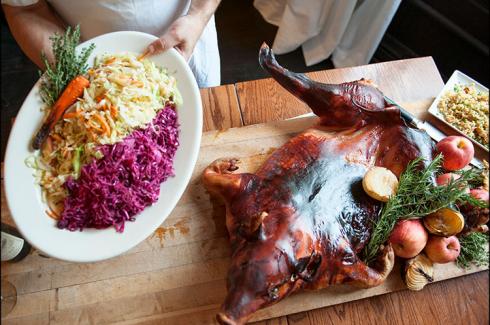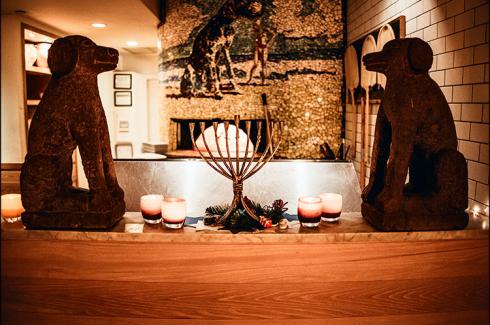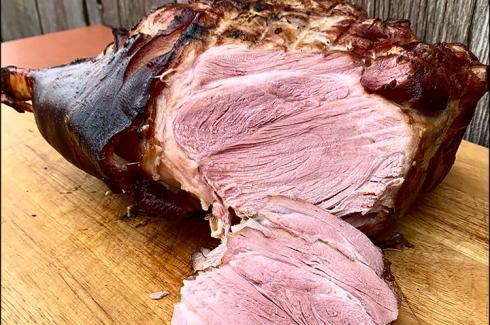Those familiar with Hiroyuki Hamada’s work were surprised when he began making paintings a few years ago. Those works, unveiled at places like the New York City gallery where he shows, Bookstein, now Bookstein Projects, revealed an emotive and sometimes even gestural approach that seemed at odds with his more considered sculptures.
Mr. Hamada, however, began his artistic career working in painting and photography, making his switch a kind of homecoming. He has also used drawing as a basis for both paintings and sculpture as his work has evolved over the years.
The paintings had the effect of reminding us that the medium has always been an inextricable part of his sculptural process and an important part of the surfaces of his objects. Other kinships between two-dimensional and three-dimensional works from his hand are the suggestions of known objects that never quite become what they promise to be.
Bookstein Projects, a new iteration of the gallery that was once in Chelsea and is now in an Upper East Side townhouse, has followed the artist’s evolution to the next logical step — measuring how his exercises in painting have influenced his latest sculpture. “Hiroyuki Hamada: Recent Work” encompasses two paintings and three sculptures in an intimate one-room space that allows a slow and reflective appreciation of the objects and how the artist has progressed over the past few years even within a self-imposed limited vocabulary.
“Going back to paintings after working on sculptures for over two decades has given me clearer perspectives in facing new sets of sculptures,” the artist noted in a press release. “I feel my understanding of both painting and sculpture has deepened through broadening my operational framework.”
Having both together helps us decipher where each medium fits in his self-expression. The limited palettes consist of gradations of white and black, with umber here and there to provide a smidgen of variety and warmth. The color comes from the oxidation of metals incorporated into the work, an intentional and yet passive source. The materials Mr. Hamada uses for his paintings are acrylic and charcoal that he builds up on paper and attaches to board. Paper is a very satisfying support. It absorbs paint, but also lets it build without dulling it. Mr. Hamada allows his surfaces to build, leaving a palimpsest of earlier intentions.
In “Untitled Painting 021,” lines are laid down over a deep field of other forms that have been whitewashed in a thin veil. Then the lines themselves are blurred in spots. A black form in the upper right quadrant attaches itself to one of the sets of lines and exhibits a gash of white at its center. At the same time, even the purest of the white paint in this composition has lines pressed into it, leaving nothing on this surface undisturbed in some way.
The artist’s actions here impart an emotional fragility to the work and a sense of deflation or futility even as the lines on the bottom, forming something resembling a gun, also hint at menace.
The show’s other painting, “Untitled Painting 026,” seems more playful, with its main form resembling something like a boomerang or an inline skate, or maybe even a low-slung chair. The surface shares the same blurred traces of previous compositional forms, but the overall mood is lighter. In general, the paintings have a spontaneity and impulsiveness that seem distant from his sculptures, which are more cerebral and intentional.
It is particularly easy to compare the two mediums here, as two of the sculptures are wall-mounted. The sculpture “#84” is a composite of resin, plaster, acrylic, and enamel at the service of a flayed volleyball, which looks simultaneously abject and lighthearted. Adding something so identifiable to the work anchors it in a way that previous sculptures tended to avoid or not consider. Those works sometimes teased recognizable elements but left viewers flailing to come up with what they were. The familiar element allows for a fuller consideration of the whole where other elements are not what they seem. The supportive backing is thick and wood-like, but is masquerading as such.
The other wall piece, “#86,” is simply painted resin. It too has a familiar look, but one much less accessible. It is reminiscent of a cupped hand, a tooth with a cavity, or some kind of lily. But it’s also clearly none of these, another enigmatic compilation of forms, friendlier than some earlier works, but no less mysterious.
The last sculpture, a floor piece titled “#87,” is a rich charcoal gray painted resin with paler veins that make it look constructed from curved masonry. Here, the assembled forms could make one think of a Giorgio Morandi “Metaphysical Still Life” painting of a bottle and mannequin head. Yet again, it looks little like it, but there is an essence there that once felt can’t be denied, at least to this viewer.
The exhibition remains on view through Feb. 15.




